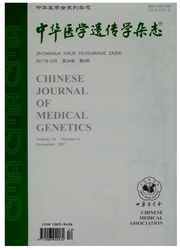

 中文摘要:
中文摘要:
目的探讨生活在西藏林芝地区僜人群体线粒体DNA(mitochondrialDNA,mtDNA)控制区的两个高变区(hypervariableregions,HVR)Ⅰ、Ⅱ的多态性。方法采用PCR扩增和末端标记荧光循环测序的方法,对119名僜人无关个体进行了序列分析。结果共观察到110个变异位点,序列变异包括了碱基的转换、颠换、插入、缺失等各种类型。其中,在HVRI区(nt16024-nt16365)内观察到68个变异位点,119种单体型,基因多样性(h)为0.9916;在HVRⅡ区(nt73-nt340)内观察到42变异位点,113种单体型,基因多样性为0.9907;随机匹配概率(randomlymatchingprobability,RMP)在HVRⅠ和HVRⅡ区的P值分别为0.0084和0.0093;联合两个高变区序列,可观察到119种不同的单体型,随机匹配概率P值为0.0084。结论西藏僜人与其他群体比较有其独特的线粒体DNA序列遗传特点,与中国汉族及亚洲其他群体有明显差异。线粒体DNA序列多态性在群体遗传学调查及法医学个体识别方面有广泛的应用前景。
 英文摘要:
英文摘要:
Objective To analyze the sequence polymorphisms of the mitochondrial DNA hypervariable regions Ⅰ (HVR Ⅰ ) and HVR Ⅱ in the Deng population in Linzhi area of Tibet. Methods rntDNAs obtained from 119 unrelated individuals were amplified and directly sequenced. Results One hundred and ten variable sites were identified, including nucleotide transitions, transversions, and insertions. In the HVR Ⅰ region (nt16024-nt16365), 68 polymorphic sites and 119 haplotypes were observed, the genetic diversity was 0. 9916. In the HVRⅡ (nt73-nt340) region, 42 polymorphic sites and 113 haplotypes were observed, and the genetic diversity was 0. 9907. The random match probability of the HVRⅠ and HVRⅡ regions were 0. 0084 and 0. 0093, respectively. When combining the HVRI and HVRⅡ regions, 119 different haplotypes were found. The combined match probability of two unrelated persons having the same sequence was 0. 0084. Conclusion There are some unique polymorphic loci in the Deng population. There are different genetic structures between Chinese and other Asian populations in the mitoehondrial DNA D-loop region. Sequence polymorphism of mitochondrial DNA HVR Ⅰ and HVR Ⅱ can be used as a genetic marker for forensic individual identification and genetic analysis.
 同期刊论文项目
同期刊论文项目
 同项目期刊论文
同项目期刊论文
 期刊信息
期刊信息
